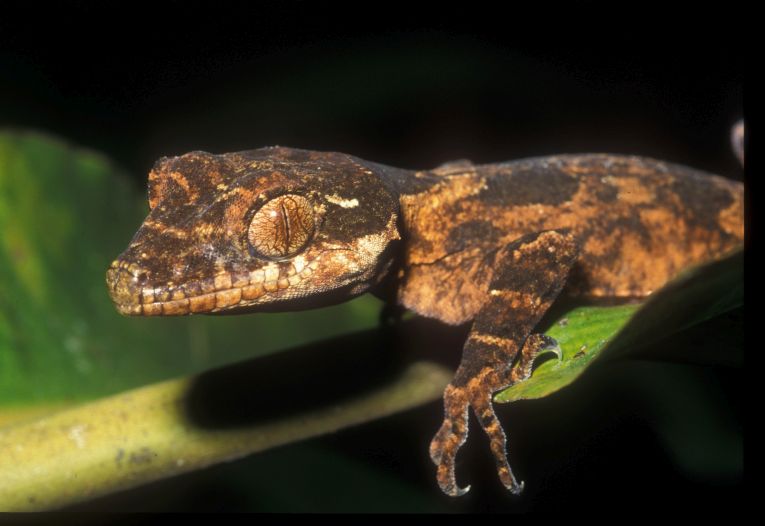The Wallace Line is an imaginary border between Asia and Australasia, proposed by the iconic Alfred Russell Wallace, after his thorough research into the entire region. Species able to cross the geographical barrier have only been flighted species with a very few marine organisms. The terrestrials that have made it across either to or from Asia include lizards such as this group of geckos. They belong to the Cyrtodactylus genus.
The bent-toed geckos have 180 species on both sides of the mythic Wallacea, of which 87 were used in this paper's testing procedures. In SE Asia and Indochina, they tend to have many smaller species such as the Malaysian Cyrtodactylus macrotuberculatus.There are only 5 New Guinea species that are smaller than the mean length.
Using ancestral state analyses, the New Guinea species can be seen to have independently evolved gigantism several times over. The other vertebrates that have achieved this kind of migration into the east include a few recorded examples such as the adaptive radiation of fanged frogs,Limonectes, to Sulawesi from the Philippines.
In Biology Letters of the Royal Society, Paul Oliver, Phillip Skipwith and Michael S. Y. Lee have the paper entitled - Crossing the line: increasing body size in a trans-Wallacean lizard radiation. They document the enlarged size of Australopapuan species compared to those in the west (Asia), which seem restricted by their environmental conditions. Predators, food availability, or some similar kind of competitive edge are assumed to be responsible for the size difference, but that is yet to be tested.
Other gecko species present in Asia could also restrain the size of Asian Cyrtodactylus.Tokays and Gecko smithi, for example, reaches 35cm in length. The size of species of the genus Gecko would be enough to allow strong competition and predation in the same microhabitat.
The major factor that strikes you, however, is the total lack of the main Asian predators in the Papuan region. This gecko group of colonists are so far the only evidence that evolution changes when they disperse into the Australopapuan region. Paul Oliver and his colleagues from the Australian National University, Canberra, Museum Victoria, and the South Australian Museum as well as the Universities of Adelaide, Melbourne and California, Berkeley must be congratulated on a highly readable and most significant paper on these most numerous lizards.
We have never been immune to the attractions of tokays on our hut or this tiny new species: the bumblebee gecko, endemic to New Guinea's Manus Island. Read it up in Nactus kunan, the bumblebee gecko.










